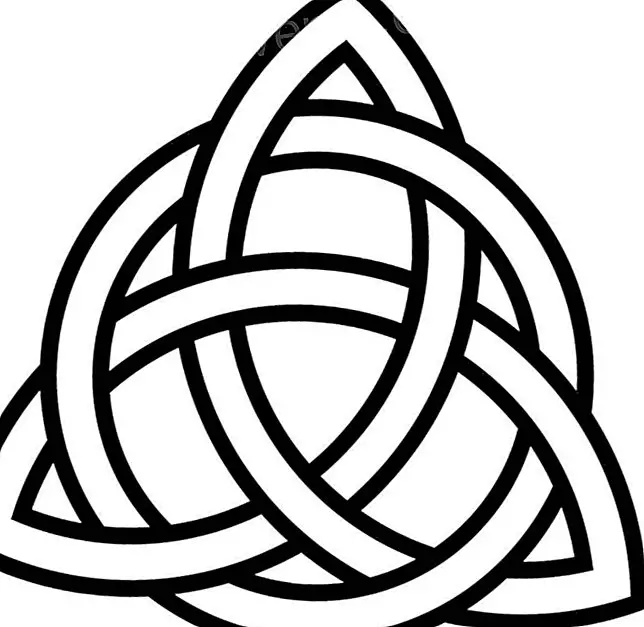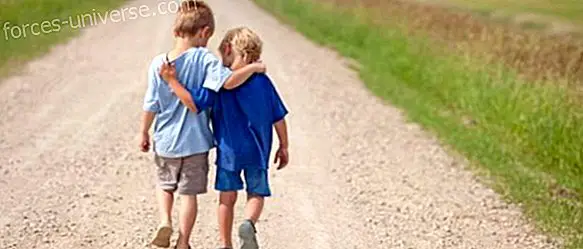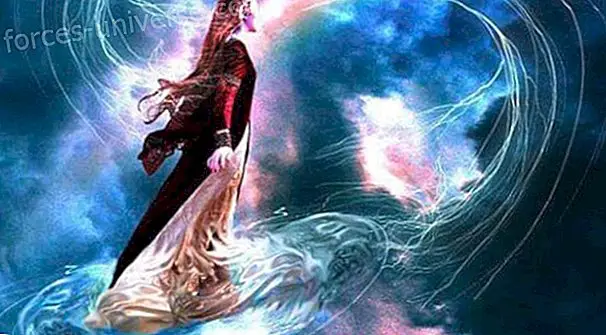 “The greatest gift in the universe is life.
“The greatest gift in the universe is life.
The greatest happiness for this life is consciousness.
The joy for this consciousness is the willpower.
The root of the will is love. ”
Angel Galileo
The soul energizes the human mechanism through two aspects: life and consciousness . The vital principle has its temporary seat in the heart, while the conscious principle has its seat in the brain. Therefore, the objective of education should be to train the mechanism to respond to the life of the soul. One of the purposes of education is to promote the care of the soul that allows to achieve a healthier and more pleasant life. Lifestyle is understood as the set of strategic solutions that the individual adopts to meet the objectives of a life project. That is, cognitive, affective and behavioral packages that aim to achieve a good quality of life. Quality of life is understood as an individual's personal perception of their life situation, within the cultural context and values in which they live, and in relation to their objectives, expectations, values and interests. It includes aspects such as enjoying freedom, developing the initiative, cultivating social relationships, being satisfied, presenting few health problems, eating few pills, not being sick, having a good profession, having a good job, finding a sense of life.
Although health behaviors are usually related to very specific and basically behavioral activities, education is more interested in those mental, personality, or schematic variables that increase the probability of a healthy lifestyle. This article focuses on the study of the mental signs of education, which favor the development of culture, of the soul.
LIFE AND HEALTH, MIND AND EDUCATION.
 Pattern, Structure and Process are
Pattern, Structure and Process are
The three criteria of a living system.
The synthesis of the first two
Pattern (form, order, quality) and
Structure (substance, matter, quantity)
gave rise to the concept of process:
Cognition as a vital process.
Fritjof Capra
Just as objectivity is dual, life-form, so is subjectivity, mind-love, and fusion produces consciousness. Only the Spirit is an indivisible unit; the unfolding of the spirit will only take place when the double evolution of the form and the psyche has been consummated. Then the Spirit will reap the fruit of evolution and will bring together the qualities cultivated during the manifestation: perfect love and perfect intelligence, manifesting itself as love-wisdom A, intelligent and active.
Life is really a process that takes place between the organism (me) and its environment. Life as a process is cognition. The directive models of the mind They are highly influential in the selection of goals. It is through the mediation of the mind that the self and the environment establish meaningful contact. The ability and willingness of the organism to make such significant contacts with the environment represents the attitude of the entire personality. In the human system it is the personality that unifies all activities and in turn imparts the qualities of identity and creativity.
Education is undoubtedly one of the ways to achieve the proposed objectives in health. Thanks to it, the processes of promotion, prevention and intervention are carried out. Prevention basically focuses on the disease, preventing its future appearance, while the promotion refers to health in a positive sense, its goal is life, growth and the realization of the human being in different areas.
The Pan American Health Organization (PAHO) states that health promotion refers both to the prevention and control of the disease and to a process that allows people and communities to maintain and improve their quality of life in the broadest sense, that is, in terms of physical and mental well-being, relationships with other people, creativity and productivity, personal satisfactions; and from there, the promotion of health becomes an instrument to reach the highest level of social and individual well-being of the populations. The promotion of health-oriented quality of life implies, among other objectives: changing beliefs, changing attitudes and values, and improving decision making. That is, the promotion of healthy lifestyles implies knowing those behaviors that improve or undermine the health of individuals and act in this direction by increasing the indexes of quality of life.
Mental health is the state of equilibrium between a person and their socio-cultural environment that guarantees their labor, intellectual and relationship participation to achieve a well-being and quality of life.
EDUCATION AND DEVELOPMENT: its indicators
 Nine petals are in the human egoic lotus
Nine petals are in the human egoic lotus
3 of knowledge, 3 of love and 3 of will
That have generated the development of humanity
Civilization-Culture-Development
Collaboration-Understanding-Compassion
Participation-Purpose- Planning
Tibetan Master
Establishing relations between education and development implies establishing differences between growth and development, efficiency and effectiveness, meaning and value, adaptation and learning.
Growing up is increasing in size or number. To develop is to increase one's ability and desire to satisfy legitimate needs and desires, both their own and those of others. Development is an increase in capacity and competition. Development is better reflected in the quality of life than in the standard of living. The best evidence of the correlation between growth and development is a simultaneous increase in the standard of living and quality of life.
An indicator commonly used to measure the quality of life is the Human Development Index (HDI), established by the United Nations to measure the degree of development of countries through the United Nations Development Program (UNDP), whose Calculation is made from three variables: wealth, health and education.
Wealth is measured by GDP per capita in international dollars. Find in entrepreneurship a way to encourage it, an initiative for the 21st century. Health is measured according to life expectancy at birth. Find in cognitive therapy a way to encourage it, a therapy for the 21st century Education is measured by the adult literacy rate and the combined gross enrollment rate in primary, secondary and higher education, as well as the years of duration of the Obligatory education. Find a way to promote it in entrepreneurship, an ethic for the 21st century
The difference between growth and development is reflected in the difference between efficiency and effectiveness. Both efficiency and effectiveness are determined in relation to one or more purposes. The value of these objectives is not relevant for the determination of efficiency, but it is essential for the determination of effectiveness. The effectiveness of the behavior is a function of both its efficiency for one or more results and the values of those results. Effectiveness, therefore, is the relationship established between effectiveness and efficiency, between results and the ability to produce them. The effectiveness takes into consideration the value of the needs that are pursued as well as the efficiency of your search.
Development is not mere progress. Progress is always significant, but has no value in the absence of development. The supreme value of human life consists in the progress in the meanings, the development of the values and the realization of the interrelation of these two experiences. Truth, beauty and goodness are quality values, ideals to which education should lead.
The product of a quality education should be the design of an educational system that seeks to achieve quality ideals. This system must have the ability to pursue its ideals with increasing effectiveness in constant conditions or in changing conditions; It must have the ability to learn and adapt.
Adapting is responding to internal or external change so that performance is maintained or improved. The change against which adaptation is a response may represent a threat or an opportunity. Learning is to improve performance under invariable conditions.
In an educational system neither learning nor adaptation can occur unless it is given in its administration. Therefore, an educational system that pursues an ideal state of quality must have a management system that has the ability to learn how to learn and how to adapt. Therefore, indicators in education must go beyond the literacy rate and the enrollment rate to focus on educational quality, on the effectiveness of the teaching-learning process in terms of satisfying basic needs, such as raised the statement of Jomtien (1990):
“These needs include both the essential tools for learning (such as reading and writing, oral expression, arithmetic, problem solving) as well as the basic contents of learning (theoretical and practical knowledge, values and attitudes) required for human beings be able to survive, develop their capabilities, live and work with dignity, participate fully in development, improve the quality of their lives, make informed decisions and continue learning. ”
Learners must learn to control and regulate their cognitive processes as well as get used to reflecting on their own knowledge. A quality education system will have to make the transition increasingly demanded by our learning culture.
- From adaptive learning to generative, meaningful and effective learning.
- From the development of personality towards the development of intelligence.
- From a teaching for understanding, to a learning for entrepreneurship.
- From disciplining to transdisciplinary.
- From a behavioral evaluation to a performance evaluation.
- From an ethics of personality to an ethics of character.
- From a religious education to an education for spirituality.
Quality education places great importance on performance evaluation, the definition of goals and its indicators. The following is an example of assessment in the preschool grade.
COMPETENCES | COGNITIVE FUNCTIONS | WE PERFORMED |
Math | Quantification and counting principles Communication of quantities with notations Establishment of order relationships Arithmetic reasoning | It shows a methodical approach. Transform the task / material. |
Communicative | Anticipation Development of discourse in the expression of ideas about the text Textualization and constitution of rules. | Responds to visual stimuli, additives, kinetics. He is interested in knowing the "correct" answer. |
Scientist | Classification Hypothesis formulation Inference | Be attentive to details / is observant. It focuses on the interaction with the adult |
Citizen | Emotion identification Recognition of another's perspective Rule Management | Tailor your commitments He is proud of his achievements. |
Artistic | Production Perception Reflection. | Show curiosity about the materials. Use the material unexpectedly. |
THE MIND AS A SYSTEM
One gram of information equals one kilogram of data.
One gram of knowledge equals one kilogram of information.
One gram of understanding equals one kilogram of knowledge.
A gram of wisdom equals a kilogram of understanding.
Rusell Ackoff
Cognitive science is called interdisciplinary study of how information is represented and transformed in the mind / brain. The brain is a closed system modulated by the senses. The mind is an intentional system, endowed not only with rationality, but also with purpose. It is a system that pursues multiple goals, and different goals have a common property. The soul is a system that pursues ideals, it is an intentional system that, after reaching any of its goals or objectives, seeks another goal and objective that brings it closer to its ideal. The soul has a concept of "perfection" or of the "ultimately desirable" and pursues it systematically, that is, in interrelated steps. That instinct for improvement, based on discontent, has necessarily implied temperament as an attitude that recognizes dualities. But there is another state of consciousness that recognizes the unity behind duality: the state of the enlightened mind. Four are the privileges that distinguish us as human beings of free choice, self-consciousness, imagination, moral conscience and independent will, These functions are what have been called intellectual skills.
Information processing : analysis-synthesis, evaluation.
It is in the cognitive system that the information units are connected, generating representations of the world, which are those that manipulate and with which the mind works. Mental images arise from such representation. The representations, identified in high-order structures, would be responsible for the conservation of information, and the guidance and regulation of behavior, as well as its planning. The elementary structure of knowledge is the scheme.
Education has neglected the laws of thought and has focused on reading, writing and arithmetic, however, reading, writing and calculating curiously symbolize the total evolutionary development of the human kingdom. Reading takes ideas in ways and is related to the first step of the creative process. Writing symbolizes the method by which the process is carried out, the relationship that a person has with ideas. The calculation allows to produce the formulas that will create the idea and lead it to the concretion. When children are taught in preschool to work with logical blocks, they are being initiated into the essence of creativity: design.
The solution of problems : causes-effects, objectives.
An essential part of problem solving lies in determining what the relevant information is and collecting it.
Most of what most teachers consider problems are not problems at all, they are exercises or questions, and most teachers, and therefore of the disciples, are not aware of the important differences between them.
An exercise is a problem that is denied at least part of the information required to formulate it to who is asked to solve it.
A question is an exercise whose reason for wanting to solve it has been suppressed. It is an exercise without motivation, a problem without context. However, the reasons for wanting to answer a question determine what is a correct answer.
Decision making : means-ends, strategies.
The choice or decision-making process consists in adopting a course of action defined by the values of one or more of the controllable variables. There should be at least two possible courses of action, otherwise there is no choice, and therefore, no problem. When making a decision, an attempt is made to select an action course that produces the desired result, a result that is efficient according to what is valued. A result with a positive assessment is called an end.
Planning is designing a desired future as well as the effective means to realize it. It is an early decision making. Planning is based on the sense of direction and on the defined orientation of the will towards a given objective. This is the function of the Teaching.
Strategic planning relates the identification of weaknesses and strengths of the I to the specific threats and opportunities of the environment. This implies the design of a control system. The mind as a learning system fulfills this function.
AUTONOMOUS LEARNING SYSTEM

The control and meta-knowledge apply both to the management of learning techniques and resources and to the implicit and explicit learning outcomes. The mind is the one that controls an intentional system (the personality) and performs a part of it. The mind is the one that observes the behavior of the I (A) and the medium (B) . When observing, it generates data (1) that requires processing to convert it into information (2) . Information processing is the function of the cognitive subsystem (C) . It consists of three subsystems for:
ü Tactical and strategic decision making. Role of the will. Planning
ü Identification of real and potential problems. Function of consciousness Metacognition
ü The maintenance and improvement of performance under variable and invariable conditions. Intelligence function Creativity.
The Will (D) subsystem makes decisions based on information that may be biased and originated in automatic thoughts. The record of these decisions must be kept in a memory (E), where the real conditions are compared with the ideals and the actual results with those expected, information that will be used to give instructions (7) . The defined goals (8) and the actual performance of that decision must be compared. Biases (9) are also used for Consciousness (F) to perform the clinical judgment The objective of a diagnosis is to determine what caused the deviations and to prescribe a corrective or exploitation action. Although the causes of confirmatory biases can be difficult to identify, there are only four types.
ü The information used to make the decision was incorrect. What requires a change in the cognitive subsystem (10a) or in the consciousness subsystem (10d) in order to avoid the repetition of the error.
ü The decision-making process may have been wrong. This requires a change in the subsystem of will. (10b).
ü The decision may not have been implemented as planned. What requires changes (10c).
ü The medium can change in a way that was not anticipated. In such cases, a way must be found to better anticipate these changes, decrease sensitivity to them, or reduce the likelihood of their occurrence.
The process that begins with the preparation of a record of decisions (6) and that concludes with a change of mentality or environment (10) is what makes it possible for the mind to learn and adapt in a meaningful and effective way. The changes ensure double circuit learning and adaptation: learning how to learn and how to adapt.
Some of these performance indicators (11) are symptoms, which should be interpreted by intelligence (G) as a system of symbols. Intelligence has to self-evaluate the way to capitalize its resources (12). These strengths and weaknesses should be diagnosed. Once a diagnosis is obtained, the threats or opportunities detected (13) must be reported to the decision-making subsystem. The awareness subsystem must distribute a diagnostic record and prescriptions (14) very similar to the decision record.
CHANGES OF STATE: The signs of change
All individual souls,
in the right conditions,
they may be in a subconscious state,
conscious or supraconscious,
these are the three psychic states
of consciousness
By understanding the mind as a system, we can establish differences and similarities between the brain, mind and consciousness. A system works as a whole, then it has different properties from the parts that compose it, these properties are known as emergent properties, because they emerge from the system while it is in action. The brain seems to delight in these emerging properties. The cerebral control of organized movement gave rise to the generation and nature of the mind. Consciousness is also an emergent property, temperament, emotions, pain, dreams, culture, health and well-being. A germ is an energy point that contains in itself certain living potentialities, causing certain effects on the surrounding energy field.
The state of a system at a time in time is the set of relevant properties that the system has at that time. The values of the pop-up properties constitute the state of the system. The variables used as symptoms are properties of the behavior or performance of the organism or social organization.






